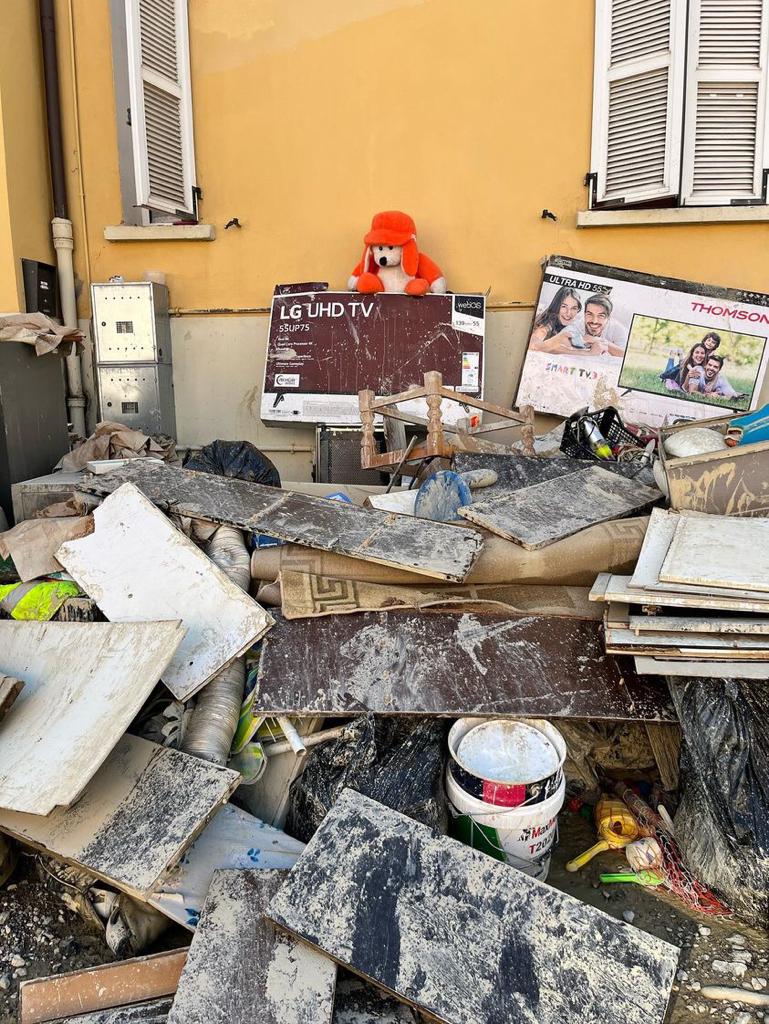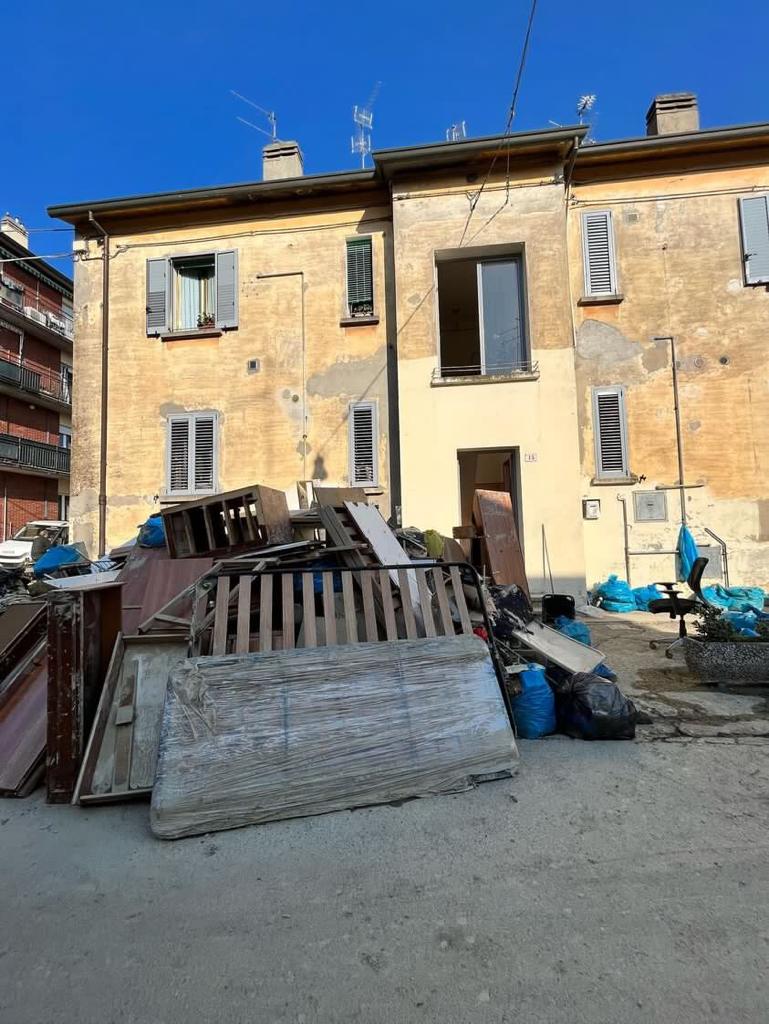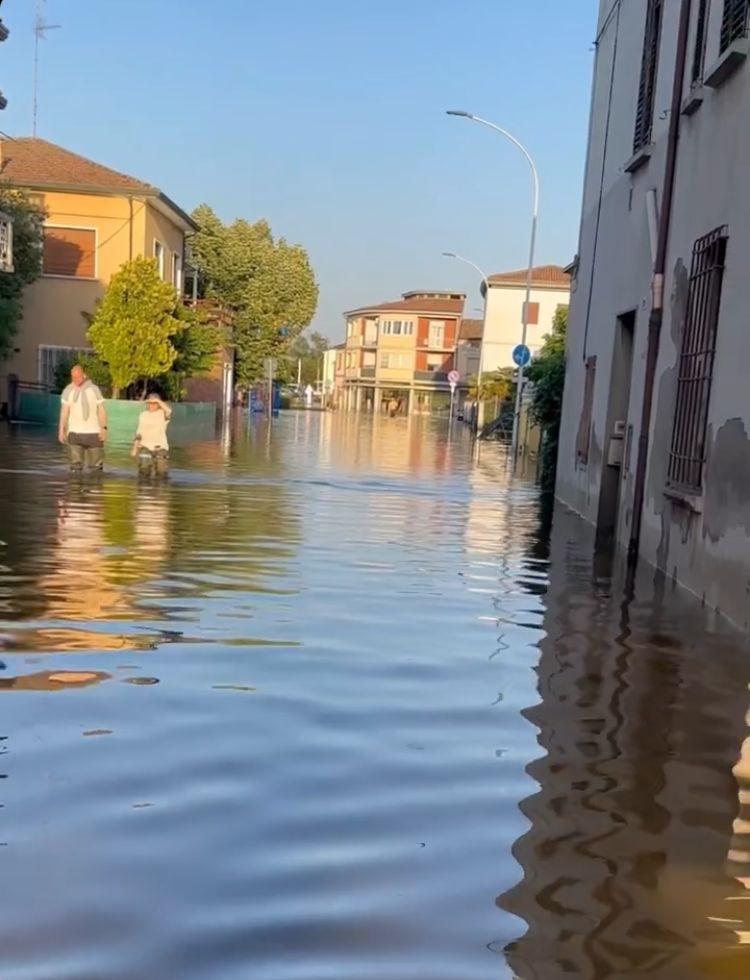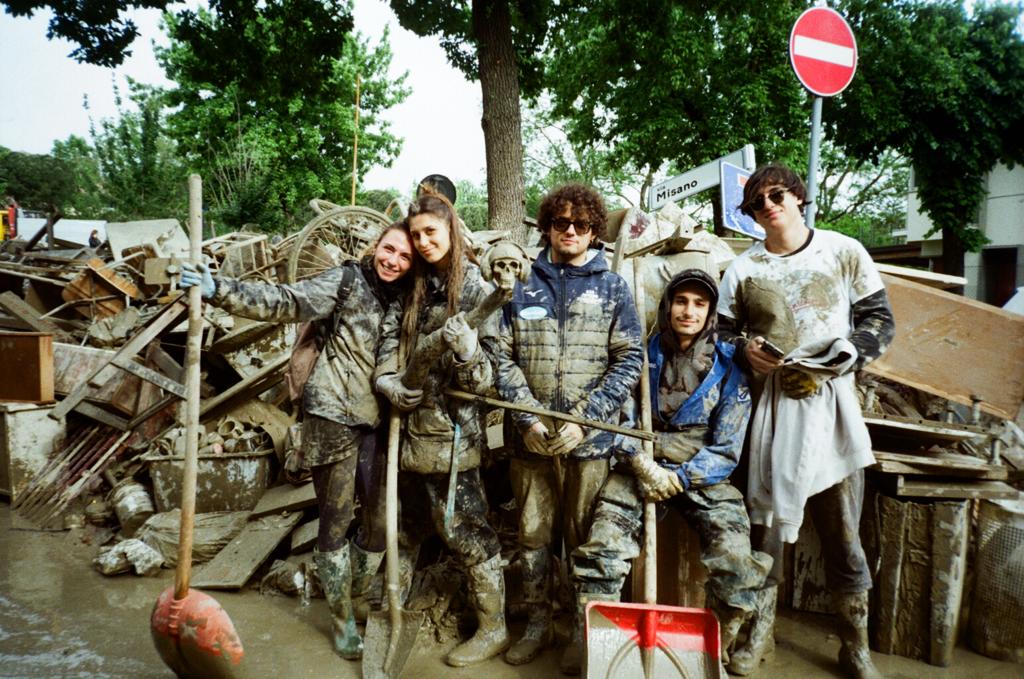
With the boot(s) in the water
Authors . Climate Change . SocietyAlthough the climate keeps changing, the institutions continue to be absent, leaving the population and the Italian peninsula under water. But the younger generation promptly repairs the gaps left by the government.
A cold, dark cellar, completely submerged by mud and water. Sofia is in there and tries to help to free the cellar from the water. “It was cold, dark, we had a rucksack on our shoulders, and we couldn’t see anything. There were four or five of us with buckets to remove the water and someone passing the pressure washer over the walls, but it was dark, and we couldn’t really understand anything”, she says. Not that outside, in the sunlight, the situation was any clearer: “It was like feeling the calm before the storm. I arrived when there was still water in the villages and they looked almost like ghost towns, there was nothing but water covering them”, says Gianluca, a young man from Veneto, who has been studying in Emilia-Romagna for almost three years and who, like Sofia, was involved as a volunteer in the days following the flooding between the 16th and 18th May this year.

Anxiety, fear and uncertainty affected the population in the days of heavy rain before the floods, when the authorities had issued a weather alert and the situation started looking to become very dangerous. “After few days of being locked in my house, I wanted to go out to see what the situation was like, but still I was afraid”, says Sofia. However, “the worst feeling was when I arrived a few days later and went to help out in the affected areas”, says Gianluca, a feeling of helplessness in in front of people who lost everything from one day to another, who found themselves with flooded cellars and garages and who couldn’t do nothing but starting from scratch on their own.

When the climate calls, the institutions do not respond
Heavy rainfall and flooding phenomena affect the Italian peninsula with increasing incidence and intensity. The Italian territory is already made up of very weak soil conformation and land consumption, together with excessive and poorly planned urbanisation, have further weakened it. If, on the one hand, the Italian soil is no longer able to hold large quantities of water, on the other hand, climate change, which increases the frequency and magnitude of these rainfalls, certainly becomes a factor that affects and amplifies the problem.

A few months later, at the beginning of November, Laura tells how she found herself removing mud from the streets of Campi Bisenzio (FI) with a small pan she found in the street: “it was very intense for me, because it made me experience first-hand situations that, also due to climate change, we mainly see on television”. The changes are happening faster and within a short time distance from each other, becoming irreversible. The main problem, according to Laura, is that these events happen first and foremost because of a structural problem in the area, but its effects, however, are overlooked or at least not considered urgent enough. “This is mainly the fault of the man, who is the one, who then loses everything: when people lose their cars, their homes and in some cases even their lives, it is because this problem is neglected and not dealt with in a responsible manner”.

To date, investments and prevention work are still not enough to prevent such tragedies. Sofia, who comes from the city of Cesena, admits, in fact, that before the flood, the city was not prepared for such a catastrophe at all, but that nothing concrete was done afterwards either, such as investment or prevention work. “In my opinion there is a basic problem: there is work that should have been done over the years, but instead it is left to those who will come later. By the time they will come, however, it will be already too late”, says Gianluca.

A community that comes together
It is in times of difficulty that, despite the loneliness to which citizens are left by the institutions, great solidarity and sense of community is created. From these tragedies comes the desire and the need to help one’s fellow citizens, or those who “have always welcomed me with open arms”, as Gianluca says.

During the days following the floods in Emilia-Romagna and Tuscany, thousands of volunteers came from all over Italy to help the affected areas. “It was great to see so many people in the streets, people of different ages, all together for the same reason. There was really a lot of solidarity”, says Sofia. The image of a kilometre-long car queue to enter the city of Imola remains indelibly in Gianluca’s mind. “I will always remember a Panda 4×4 with ten people inside, three on the roof and two in the boot, willing to go and help”, he says.

It was significant and very supportive for these communities to see the young people get involved, both physically, “because the work was very physical anyway, such as creating human chains to empty ground floors or cellars, garages”, says Laura, but also psychologically. The physical and psychological strength of young people, according to Sofia, played a key role in improving the situation in a short time. “In my opinion, we young people have raised the city up again, and I’m not talking about us 20-year-olds, but also 13/14-year-olds. In a week or so we turned the city upside down”.

However, we can no longer continue to pretend that this issue does not exist and leave the consequences of these events on the shoulders of future generations. In times of need, everyone is affected: from those who are not interested to those who are more sensitive to these issues. What can be done, so that these events do not keep happening and the people affected are not forgotten?